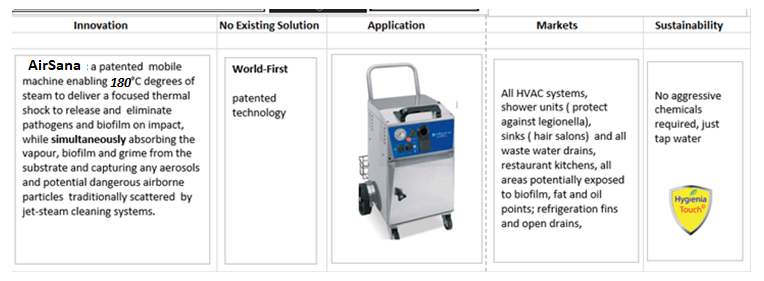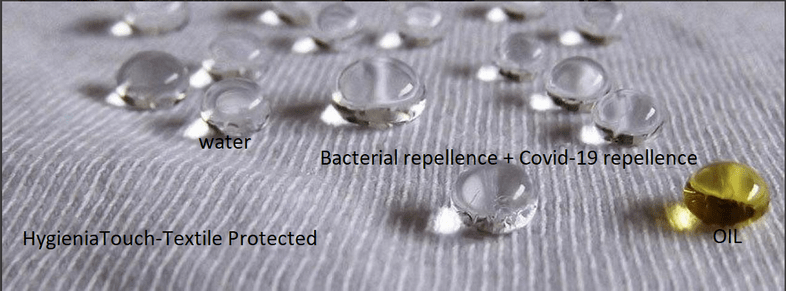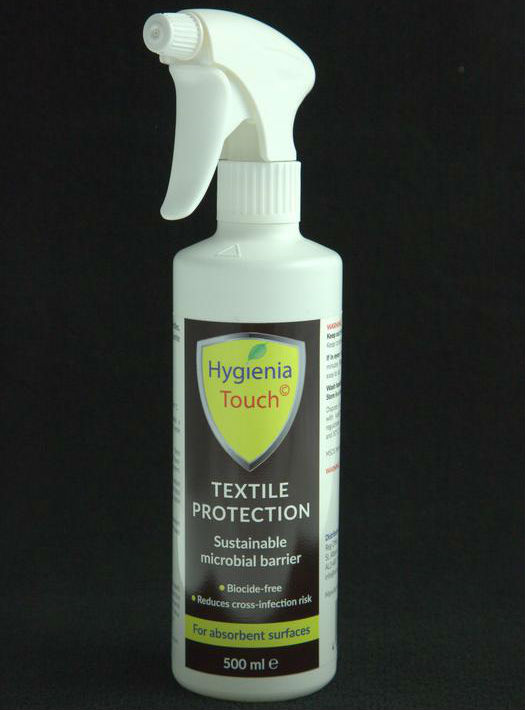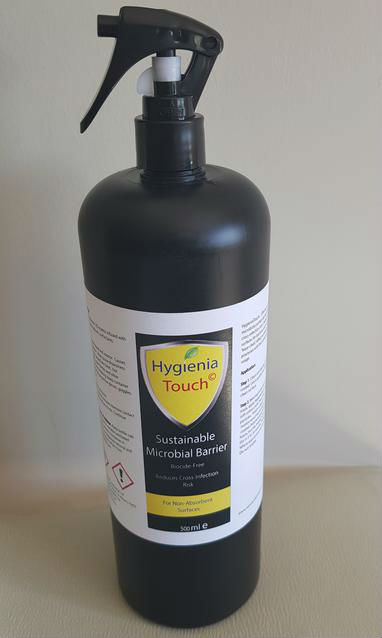
Our Products
About IngeniaTouch
Introducing new clean-label sustainable technologies for everyone
Most people acknowledged that Sustainability is becoming an ever increasingly important aspect of commercial life.
When considering Climate Change Action, much depends on our individual perspective of the world as indeed our personal conceptualised view of technology.
Moving towards a low carbon economy will require mindset change and bold decisions underpinned by legal mandates grounded in common sense and existing nous. The process will be one of adaptation to climate change as IT professionals in alignment with facility managers create the physical and digital infrastructure influencing environmental behaviour and incorporating sustainability elements into the commercial business model.
The IT sector has phenomenally enhanced innovation, knowledge, education, economic growth, business efficiency and citizen health via big data, etc. but in parallel has increased to almost saturation point societal energy needs and demands for specific scarce materials. To rebalance this increasing demand for energy, businesses large and small must seek out carbon offset methodologies to incorporate savings and efficiency at the grass root of business and in doing so, better manage facilities, offices and cities and the wellbeing and health of employees. Whilst RFID and nanobiotechnology offer many additional benefits to current best practice, here we highlight below five simple innovations that companies and their supply chain partners can adopt for climate change strategy, to lower emissions enhance brand and drive business cost savings.
1. AIRSANA enables all HVAC systems to reduce energy usage by running much more efficiently.
This patented technology is designed to sanitise surfaces using very hot steam while simultaneously absorbing moisture, keeping infrastructure dry and safe. The twin mechanised pulse directs 180 °C degrees of thermal shock extraction to the surface at 8 psi, removing all substrate dirt, grime, grease, bacteria and related pathogens in seconds whilst powerful suction forces absorb the released liquid-dirt and aerosolised particles, preventing scatter and cross-infection. AIRSANA was designed for delicate healthcare HVAC filter units and thus safe for most infrastructure.
It cleans and disinfects quickly without creating dirtiness and is the first steam cleaner that does not transmit potentially infectious aerosol spores.
AIRSANA eliminates the need for toxic disinfectants and makes cleaning and sterilization effective, efficient and safe for property and maintenance teams.
The machine are available on rent-only basis. Every year we supply a new machine to remove any risk of maintenance or productivity issues.
Property serviced by AIRSANA receive a Certification of Sanitation.


2. Magnetic & Electro Magnetics
Until technology delivers vastly enhanced hydrogen power with superior battery-cell storage capacity standards we are dependent on carbon. So how does one reduce carbon usage today?
Businesses using gas or oil for heating or energy usage can attach specialised magnets externally to the supply pipe to enable immediate and safe cost savings. It is that simple.

3. Grander Water
Perhaps one of the best secret technologies to be discovered by mainstream business is alive water! Water that can treat water and thus enhance the health of employees, strengthening their immune systems whilst also protecting the internal pipework of property and thereby reducing the need for solvents and chemicals. Not only is food and beverages much improved (taste and texture), but Grander water raises the bar for palatableness. Trials show this treated water is much more popular, preferred to sugary drinks, for example and is consumed more, reducing dehydration and related illnesses.

4. The Power of Light
UV light is well established as a sterilisation and disinfection tool in healthcare but up to recently was considered unsafe in occupied buildings. A recent innovation in specific wavelengths and bulb protection shields (UV Light 222nm) emits safe light that destroys virus and bacteria in the air and surfaces, without risk of damage to skin or eyes. This chemical-free process is as natural as photosynthesis,
confirmed safe and is an inexpensive and effective technology.

We are a vendor-neutral business fast-tracking eco-friendly technology with a decade of experience. Delighted to collaborate and drive value in an open and transparent way.
How HygieniaTouch-Textile works
Microbes, viruses, and pathogens are transmitted via air and surface contact in aerosol droplets and water vapour.
We make textiles hostile to these unwelcome visitors by creating an effective and robust microbiota surface barrier.
The barrier prevents microbial adhesion while depleting organic nutrients, such as electrolytes, water, and organic substances. Quorum sensing is prevented. Unable to feed or anchor on the protective surface, bacterial cells are prevented from forming biofilm.
Bacterial fission is effectively inhibited. The microbiota barriers contain numerous modes of action, are long-lasting and eco-friendly.
Application is simple: 1. spray the surfaces to be protected, (without drenching the fabric); 2. using a mini -paint-roller, depress the liquid deep into the weave; 3. allow to air-dry over 24 hours. The coating also protects against spills, stains, dirt and micro scratches.

Courtesy of SiO2 International Inc Toronto, Canada

A revolutionary approach to surface hygiene and safety using an advanced, ecological microbiota technology.
HygieniaTouch is a safe and effective hygiene methodology engineered to protect against bacterial and viral spread and is ideal for use in high footfall locations such as offices, hotels, restaurants, shops, leisure and sports facilities seeking to protect surfaces from COVID-19 contagion risk.
Our specially formulated HygieniaTouch coating provides a physical and mechanical action to prevent water droplets and related particles adhering to surfaces such as door handles and other touch-points, eliminating the risk of pathogenic cross-infection.

How HygeniaTouch Works
Over the last decade, developments in nanobioscience, nano-instrumentation and live imaging optical microscopy have shown how single cell bacteria and viruses behave and develop. Bacteria are shown to communicate in communities and deploy numerous and complex forces at the nano and subatomic level to sense, manipulate, deposit and anchor to surfaces. Water, water-droplets and aerosols (miniscule water vapour molecules) help transport and support bacterial-viral ecosystems.
Surface hydrophobicity (i.e. repellent capability) is the dominant factor
determining the attachment force of water droplets hosting bacterial and viral colonies and this can be impacted by surfactants designed to repel bacteria and viruses, dramatically reducing risk of cross-infection and bacterial colonisation.
The ability to repel water and water vapour from surface touch-points is a major starting point in building a COVID-19 protective health and safety strategy.
HygieniaTouch works by applying a thin-film microbiota barrier to surfaces which makes bacterial adhesion or viral attachment exceedingly difficult or impossible. This is critical for a bacterial cell to divide. For a cell to grow, it must divide and expand. If you completely block the bacterial wall from forming an appropriate life-supporting surface, it cannot expand or grow and will die naturally.
Download our PDF on how HygeniaTouch works here.

How HygieniaTouch-Textile works
Microbes, viruses, and pathogens are transmitted via air and surface contact in aerosol droplets and water vapour.
We make textiles hostile to these unwelcome visitors by creating an effective and robust microbiota surface barrier.
The barrier prevents microbial adhesion while depleting organic nutrients, such as electrolytes, water, and organic substances. Quorum sensing is prevented. Unable to feed or anchor on the protective surface, bacterial cells are prevented from forming biofilm.
Bacterial fission is effectively inhibited. The microbiota barriers contain numerous modes of action, are long-lasting and eco-friendly.
Application is simple: 1. spray the surfaces to be protected, (without drenching the fabric); 2. using a mini -paint-roller, depress the liquid deep into the weave; 3. allow to air-dry over 24 hours. The coating also protects against spills, stains, dirt and micro scratches.

Courtesy of SiO2 International Inc Toronto, Canada

